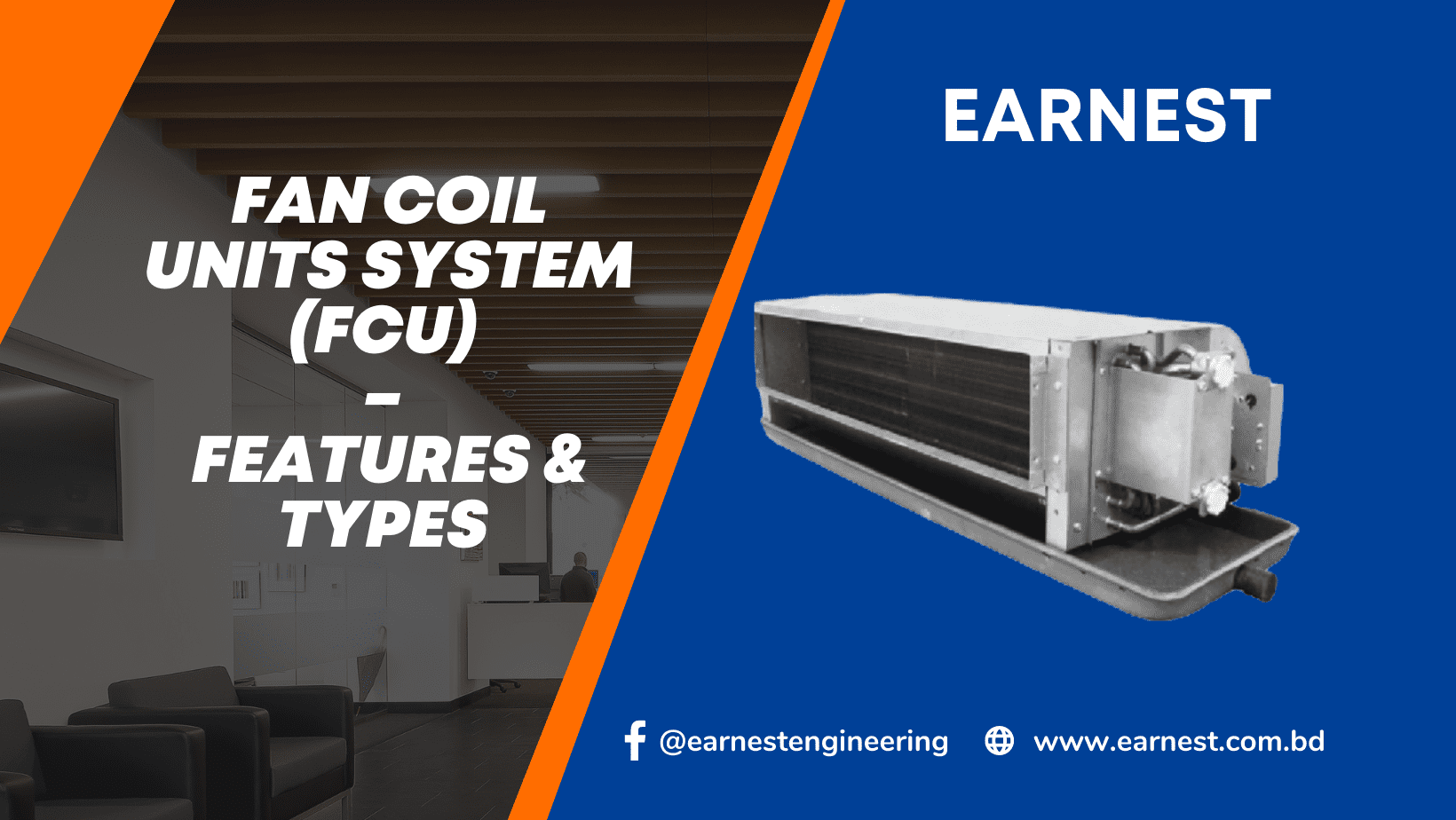Ducted Fan Coil Units System is a air management systems. They are the traditional means of regulating the temperature within four walls. Have you ever entered a space to find an air-conditioning system mounted on one wall and a room heater on the other? Not just large auditoriums but even office cabins and hotel rooms share this.
However, such conventional units involve higher costs and greater hassles. Can a single solution make the local air adjust to the temperature needs of a space, be it hot or cold? Yes! Enter Fan Coil Units or FCUs.
Because there is no ductwork involved, FCU in HVAC industry is growing in popularity. According to a study, the global fan coil unit market is expected to grow at a CAGR of 5.5% by 2027! This guide will walk you through its main features and types
What is a Fan Coil Unit?
Also known as a vertical fan coil unit, a fan coil system comprises a fan and a heat exchanger. It functions on the principle of heat exchange using fans to maintain the optimum temperature within a space.
With no connection to ductwork, a fan coil unit works with the indoor air being cooled or heated as it passes over the coil before being pushed back out. Spaces with hydraulic-based cooling solutions can benefit from this HVAC system. These include large public buildings, auditoriums, halls, confined spaces like office cabins, individual rooms in a condominium, etc.
Types of Fan Coil Units
A fan coil system can be categorized based on its construction and installation method. Let’s look at each category and its subdivisions in detail.
Based on the Construction
Based on its construction, FCU in HVAC can be divided into two-pipe or four-pipe variants. The former comes only with a single heating/cooling exchanger. Hence, the system can only perform one function at a time. You will need to switch between heating and cooling.
On the other hand, a four-pipe fan coil HVAC system comes installed with two heating/cooling exchangers. As a result, both functions can be performed simultaneously.
Based on the Method of Installation
Based on the installation method, a fan coil system can be divided into four categories, namely:
- Wall-mounted – As the name suggests, this HVAC system is mounted on the wall, just like your traditional air-conditioning units.
- Cassette-installed – This is the most popular variant, which is generally suspended to the ceiling.
- Ceiling-installed – This variant is unique in the sense that it can be suspended both vertically and horizontally.
- Under-floor-installed – This is a very special kind of fan coil unit installed inside the floor.
Out of the four, the under-floor installation may be a little complex. Otherwise, suspending or mounting FCUs is simple and easy.
Components of a Fan Coil Units
A fan coil system is generally made up of the following components –
- The casing around the unit (there may be uncased units too)
- Filter
- Fan
- Air Intake
- Heating Coil
- Cooling Coil
- Grille
- Discharge
- Speed Controller (On/Off Switch)
- Wall-Mounted Thermostat or Duct
- On/Off Modulating Valve
It’s important to note that each component mentioned above may be installed within a single space as a standalone or can even be ducted in different spaces. In the latter case, all components can be controlled using a thermostat, manual switch, or a building management system.
Advantages and Disadvantages of Fan Coil Units
Now, let’s look at some of the top advantages and disadvantages of FCU in HVAC.
Advantages
- A fan coil system can improve indoor air quality by preventing the circulation and buildup of bacteria, mold, and other airborne pollutants.
- They offer a high degree of flexibility when it comes to the rearrangement of space.
- This HVAC system is comparatively economical, requiring low-cost capital investment.
- Silent operation – not too noisy, unlike traditional HVAC systems
- It can be used as a standalone method for heating/cooling or in conjunction with other devices
- Easy to use and low-maintenance units
- Energy-efficient, so it reduces heating and cooling expenses.
Disadvantages
- No way to freshen the incoming air since the indoor air keeps circulating
- Useful for humid environments, but not so much for already dry spaces
- Not a suitable option for open-plan spaces
- Hot and cooling water valves suspended to the ceiling can cause maintenance problems
Applicable Area
A fan coil system can be installed as a primary or a secondary HVAC system. They are not very common as a primary type, usually only found in modestly-spaced offices and some mid-sized shopping centers.
As a secondary HVAC system, they are a lot more common, installed in public buildings, auditoriums, and condominiums, among others.
Energy Efficiency
FCU in HVAC systems offers a good degree of energy efficiency, slightly higher than traditional heating and cooling units. However, energy efficiency depends upon the condition that the fan coil system is well-maintained and operated carefully.
Even so, mention must be made that displacement systems and chilled beams offer greater levels of energy efficiency than standalone FCUs.
Running Costs
The cost of purchasing and maintaining a fan coil system will largely depend upon the unit’s age and condition. Older systems tend to cost higher in the long term since they come with heavy maintenance costs in the form of temperature control failure, inefficient central plant, and poor-performing valves.
However, system efficiency can be improved through regular checks and good maintenance, which should also reduce costs. Finally, a good Building Management System (BMS) should help minimize running costs associated with FCU in HVAC.
The Afterword
Like every other system, FCU IN HVAC also shows great promise and potential. Some major areas where these systems can be improved include zone temperature control, hot water flow balancing, chilled water maintenance, and upgrades of chiller plants and boilers.
Whether you’re planning to buy a new fan coil system or already own one, ask yourself some critical questions: Is the heat provided by electricity or hot water? How often should the filters be cleaned? Is there a building management system (BMS)?
Doing so will improve the system’s longevity, reducing costs and increasing energy efficiency.






